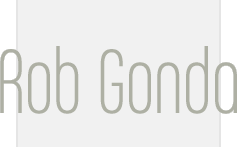Will web applications ever replace regular desktop applications? Will desktop applications adopt web paradigms? Are Web Applications Web 2.0?
The whole 2.0 thing is getting much abuse now; its hype/meaning ratio is inflating by the minute. Web 2.0 is really exposing functionality through API's and allowing people to collaborate, much more then it is about Rich Internet Applications.
The first impression when you ask anyone about Web Applications is negative; they claim they will never use them. I certainly cannot see (yet) a Photoshop or Avid web application, but let's go back a few steps. An example of a Web Application in its simplest way could be Google Maps. Having Google Maps handy, how many people download and install a desktop mapping application? Unless there is a specific business-need for it, no one. Furthermore, businesses are shifting their applications to rely in Mapquest's of Google's API.
Can you see the advantage? You do not have to install Google Maps and you do not have to download patches or updates. Everything is streamed from a centralized database. The advantages start to become clearer. Now, the same concept can apply for word processing, spreadsheets, presentations software, charting software, dictionaries, encyclopedias, and even games.
Web applications could eventually completely replace common desktop applications, which require upgrades, fixes, and security patches. Rich Internet Applications are in the way of offering everything a regular application does, but reside in the Web. If your Microsoft Word resided on the web and allowed you to do everything your regular application does, but additionally gets automatic updates, is portable and accessible from everywhere, would you use it? Given the fact that everything is streamed on-demand from the server, leaving on the client the main user interface and connectivity tools only, Web Applications will make the described scenario possible. Perhaps, Microsoft already announced Windows Live and Office Live, which will do exactly that.
This will not happen overnight, but there will be a transition from desktop applications to web applications as technology evolves. Asynchronous requests are just the beginning, but there are still some common browser problems to overcome. Flex 2.0 and Microsoft's Expression Studio are right at the corner, and they will become huge players in years to come.
For more info, visit:
http://labs.macromedia.com/technologies/flexbuilder2/
http://www.microsoft.com/products/expression/en/default.mspx




